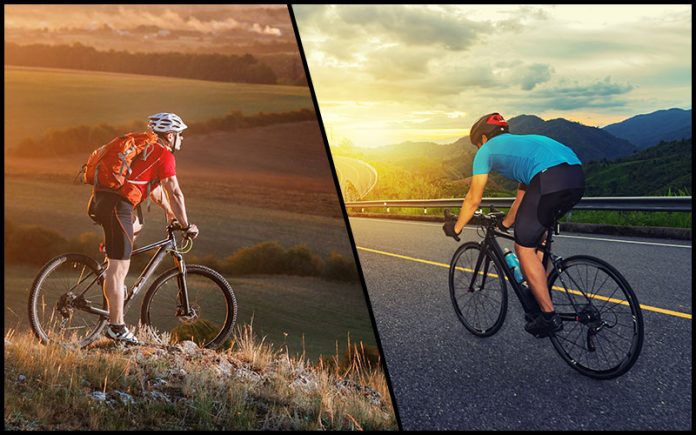Road bicycles have been around for more than 200 years. However, the design that we are most familiar with originated from the 1950s era. The invention of automotive and the World Wars slowed down their manufacture, but its availability and potential of daily use were so in demand it could not be ignored. Clearly, the details and technology behind bikes have come a long way since then. There are now several types of full suspension mountain bikes as well as road bikes used for different purposes and made of different materials.
However, during the 1970s, a new trend began: off-road cycling. Most children became familiar with cycling early and teenagers took on off-road cycling as a sport or a passionate hobby. This gave rise to a new kind of bicycle, the mountain bike. Mountain biking and racing has become an extreme sport, used for road trips and traveling through steep regions. In fact, mountain bike racing was officially included in the 1996 Atlanta Summer Olympics. Mountain bike gears are readily available nowadays; various types of design catered to both men and women are easily found now.
Structural Differences Between a Road Bike and a Mountain Bike
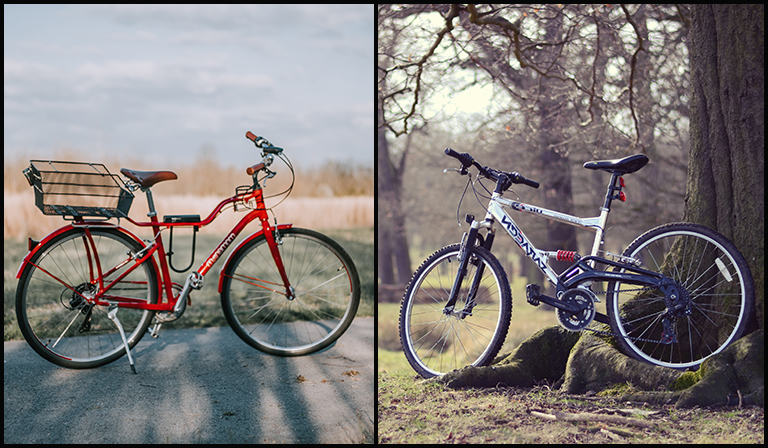
Road bikes and mountain bikes differ vastly in structure since both serve completely different purposes. Mountain bikes are made in a way that would allow them to handle rough terrains and winding roads, which is why they usually have larger and stronger frames. Road bikes are always better for the beginners though.
Tires:
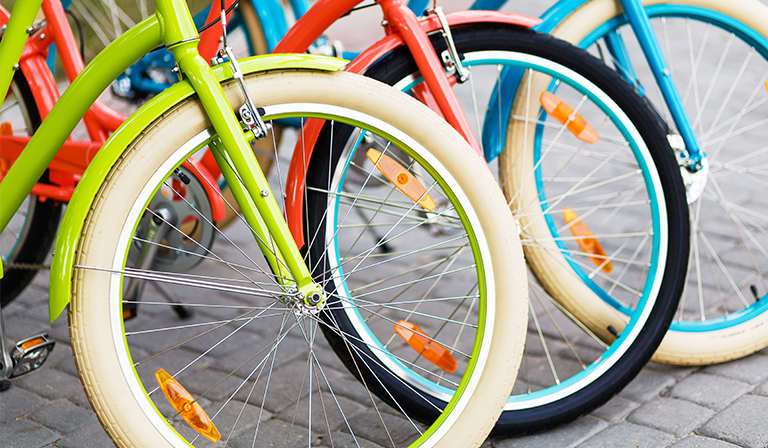
The tires of a road bike are narrow and smooth, with high pressure. The tires of a mountain bike are usually 27.5 inches or 29 inches in diameter. The tires are wider with stronger rims.
Handlebars:
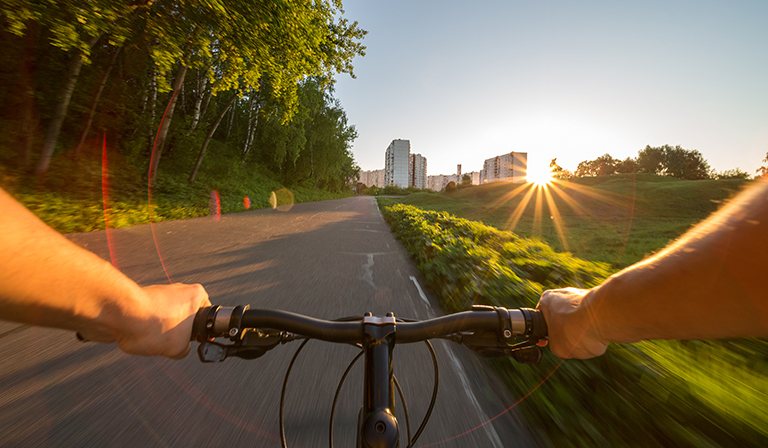
Road bike handlebars are bent to allow users to lean forward easily and run as fast as possible. This allows the rider to go faster through the lower air resistance. Mountain bikes usually have straight and flat handlebars, so a rider can sit in an upright position. The ride would be more effortless and comfortable.
Disc Brakes:
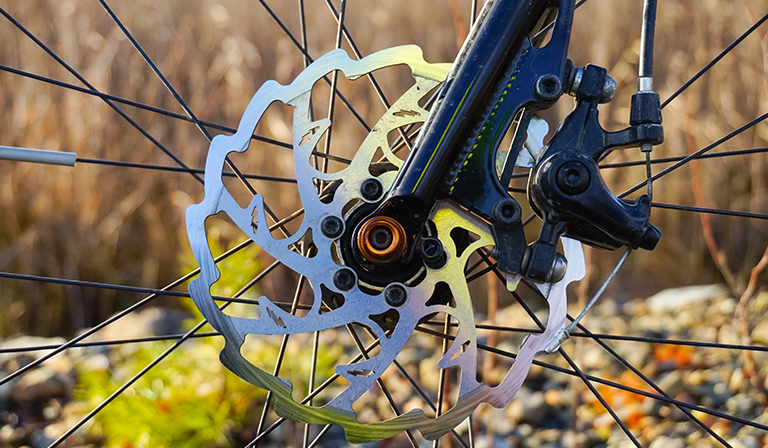
These prevent the bicycle from moving further, but are most commonly found in mountain bikes. Hydraulic disc brakes are what makes the wheels of a mountain bike much heavier. Road bikes usually have rim brakes and dual-pivot brakes.
Weight:

Road bikes have a more lightweight construction than mountain bikes. Mountain bikes are heavier due to the suspensions, disc brakes and also a few other components.
Gears:
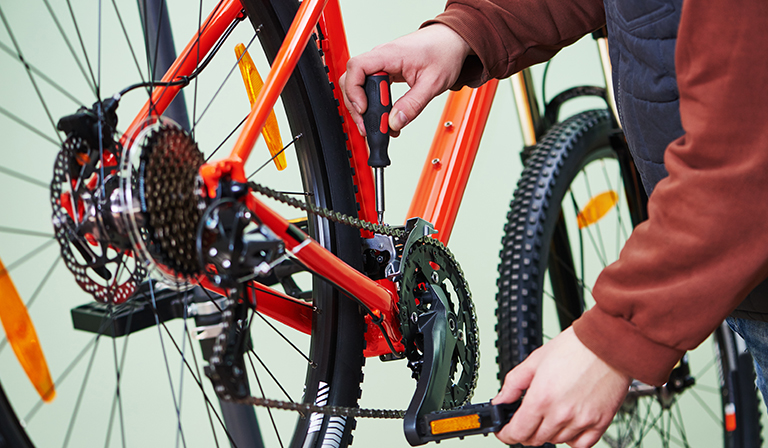
Gears allow the chain to move from cog to cog, thus pedaling is made more flexible. Mountain bikes usually have heavier and more various types of derailleur gears or other kinds of gears.
Some mountain bikes may have high-power LED lights to enable mountain biking at night. More advanced ones have GPS systems to enable location services.
What Are Road Bikes Generally Used For?

The rise of environmental concerns regarding the use of automobiles post-World War era coupled with increased fuel prices, created a ‘bike boom,’ especially among the young adult populations. Since then road bikes have been used for recreational, fitness and commuting purposes.
Touring Bikes:

Touring bikes are easier to use, much cheaper and more robust. Thus they are used for touring purposes, likely for a few hours. These can also carry heavy loads, such as touring backpacks.
Utility Bikes:

These are used to commute across towns, run small errands within cities and carry small items or groceries. These bikes are most common among teenagers and children.
Hybrid Bikes:
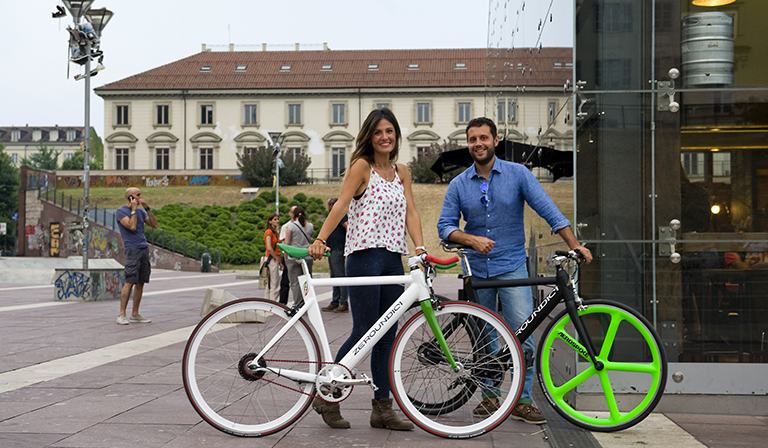
Hybrid bikes are multipurpose bikes that are becoming increasingly popular. These are called ‘hybrid’ in the sense that their structure is a mix of mountain bike, touring bike and road bike components. Their handlebars are flat and the overall structure is lightweight. These bikes can also carry a heavy load.
Recumbent Road Bikes:
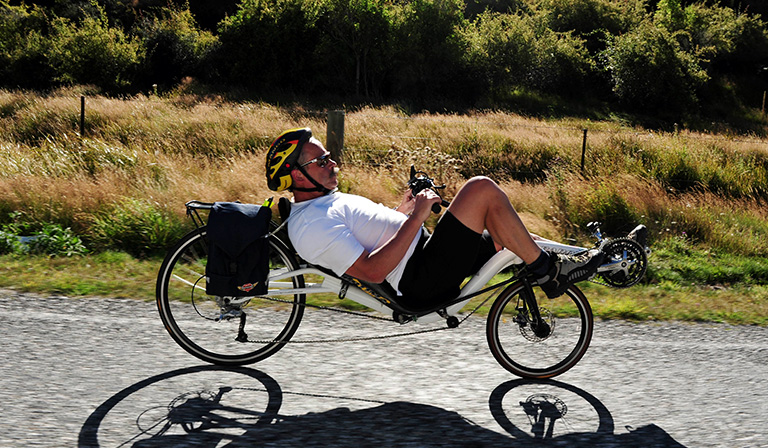
These bikes have an ergonomic design and a seatpost with a large surface area, which allows the rider to be at a reclining position, allowing the body to lay back with legs forward. These bikes are very fast because of this bike riding style. However, these bikes are not mainstream and banned from competitions.
Fitness Bikes:

Fitness bikes have flat handlebars and allow the user to sit upright. These bikes are light and fast and are generally used for fitness purposes. These are very popular among athletes and professional cyclists.
Mountain Bike Designs for Off-Road Journeys
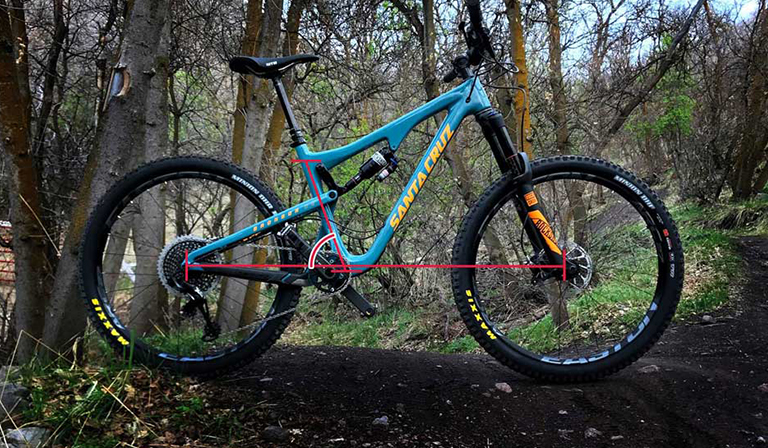
Mountain bikes are mostly used by adventure-seekers, professional cyclists, couriers, and travelers who want to cycle in unpaved terrains and steep regions. These bikes have a more powerful set of brakes and wheels and durable components, but they often cause back pain since they are mostly used in rough terrains. Based on structural design and positioning of suspension, there are three designs:
Rigid:
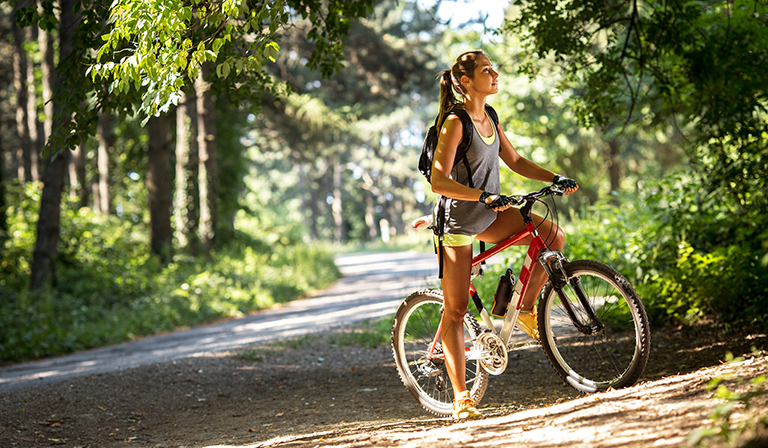
These mountain bikes have no suspension. The frame is rigid, with large tires and flat handlebars. For example, single-speed bikes have rigid steel frames used for traveling the cross country land, usually by fitness-conscious people.
Hardtail:
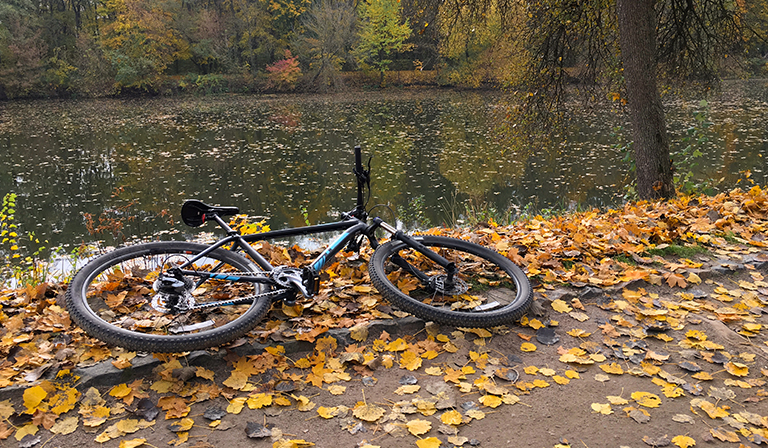
These mountain bikes have suspensions at the front wheel, but still has a rigid frame. Hardtail mountain bikes have a variety of disciplines. Cross country mountain bikes, used in cross country racing, have this design. These bikes can mostly go uphill easier than going downhill. Although trail mountain bikes have a similar design, they are slightly heavier and are better in terms of downhill movement. Dirt jumping or urban street bikes could have a rigid or hardtail frame or a hybrid of both. These bikes have big handlebars, no front brakes and a lower seat, perfect for tricks shown in these sports.
Full Suspension:
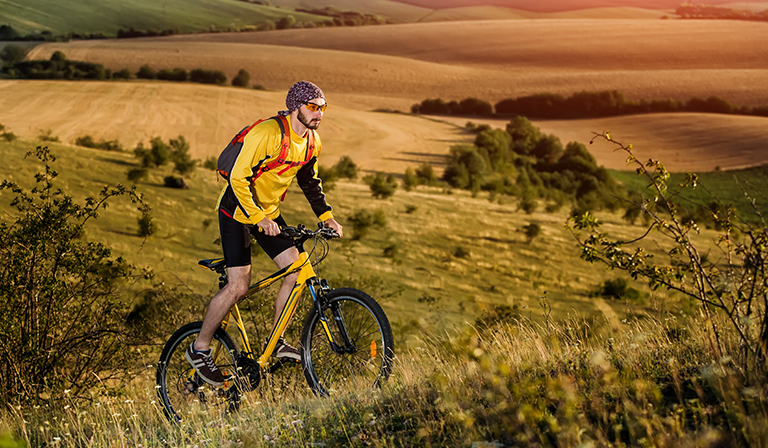
These are also called dual suspension mountain bikes because there are suspension forks in both front and rear wheels, with the rear wheels specially designed to absorb shock from bumping into rough surfaces.
Why Should You Consider the Full Suspension Mountain Bikes?
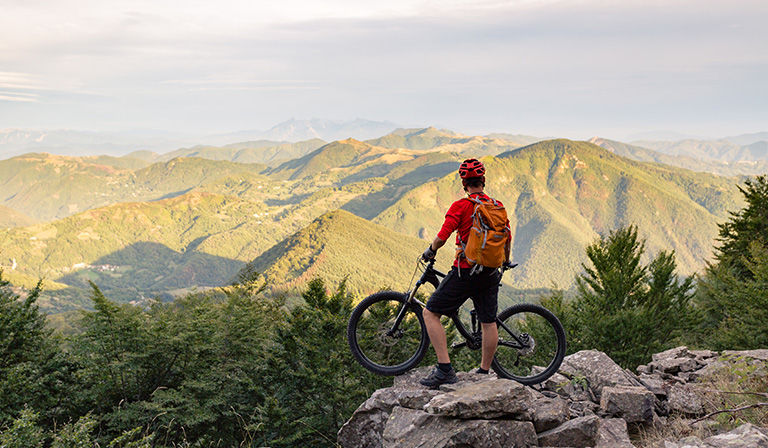
If you are someone who seeks thrill and road trips, or someone who never rode a bike but still wants to explore and travel unknown territories, in both cases your best option is a full suspension mountain bike. Full suspension mountain bikes are becoming increasingly popular, as seen in BMX freestyle racing or the Olympics. Full suspension mountain bikes are heavier but provide an easier and more comfortable ride, better traction and better handling on uneven regions. Full suspension bikes provide better support while traveling up and down hills or approaching turns. Although road bikes are cheaper, lighter and faster, full suspension mountain bikes are generally more durable and safer to ride. There are various types of full suspension bikes, depending on technical specifications and purposes.
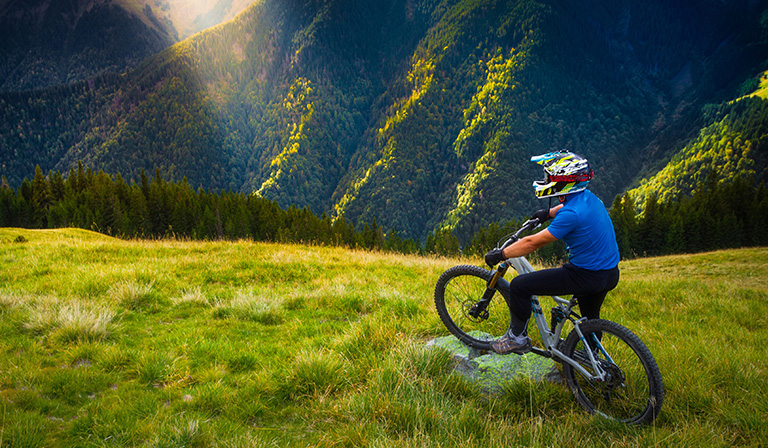
All-mountain (AM)/Enduro bikes are capable of all-day climbing uphill and running downhill.
Downhill bikes are mostly used for racing. These bikes are often designed to be lightweight. As the name suggests, these bikes are better at the downhill movement. Very often, these bikes need to be carried up by bikers.
Freeride bikes are capable of enduring crashes, jumps, heavy impacts, landings and drops. These bikes usually have aluminum frame rather than carbon fibers.
Slopestyle (SS) bikes are used for slopestyle racing as these are capable of making very large jumps at incredible speeds and harsh impact.
Tips on Using the Full Suspension Mountain Bike

Riding smart, but more importantly riding safe is essential. These tips can provide you some closure on how to get into mountain biking with all the necessary biking accessories.
- Do not make the mistake of buying a mountain bike and getting onto the roughest trail as soon as you can. Practice riding the mountain bike first and once you find your comfort zone, then you can move onto uneven trails. Remember safety is always first.
- The suspensions allow the mountain bike to stick to the trail, but still always find your way through trails that are least rough and hence provides least air resistance to your path.
- Always look a few steps ahead; do not be too concerned about what is underneath the front wheel. Rather, look ahead and plan your way through the terrain.
- By planning ahead, you gain enough time to select and shift gears beforehand and also take time to set up the suspension forks to your comfort. Make sure the forks are lubricated.
- When the bike gains momentum, let go of pedaling and let the speed of the bike carry it through the trails. Pedaling takes effort, so this way would allow less time, energy and effort to be used on pedaling. Let the momentum of the bike take you through the trails.
- When you are bound to bump into rocks and mud, try to momentarily lift your bike upwards. This would allow less of your weight to be on the bike so that speed is not affected.
- There are specific accessories available for mountain biking, for example, shoes, clothing, helmets, pads and even gloves. Always take water bottles, tire pumps, extra bike tubes and a first aid kit when you head onto mountain bike journeys.
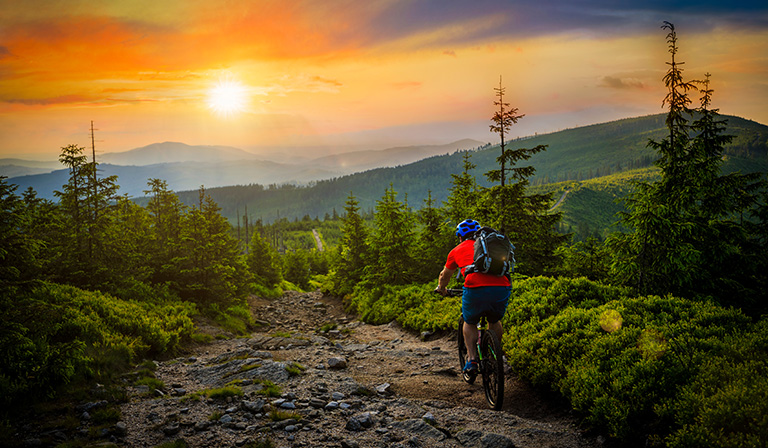
There is never really an age to experience the fun of mountain biking. Most children learn bike riding by the time they reach their teens. Teenagers and young adults take mountain biking as passion. There are adults who have begun mountain biking in midlife and have finally found zest in biking, whether it is on paved roads or rough terrain. Biking is a wonderful approach to fitness and living a healthy life, an inexpensive alternative to gym and diet control.
If you think that a mountain bike is what you need for your thrill-seeking experiences, regardless of your age or whether you are a beginner or an expert, a full suspension mountain bike is definitely your best bet. So make use of one following the safety procedures and have an incredible experience every time you go outside with your bike.


